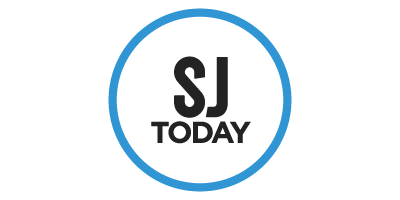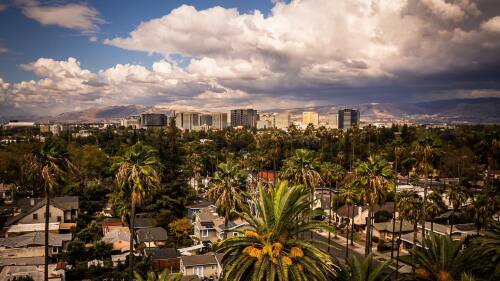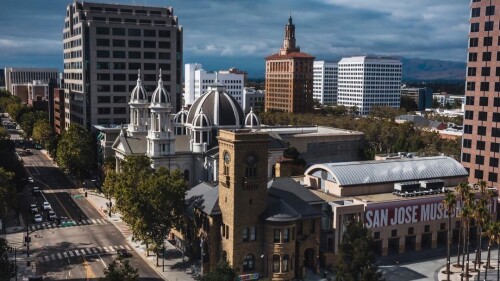The turn of the 20th century was an innovative time in San Jose. Even before East San Jose was incorporated into the city, local inventors began experimenting with a new technology: using radio waves to transmit audio from one location to another.
Remember this name: Charles David “Doc” Herrold. Though Herrold didn’t invent radio (which is the subject of much historical debate), he was the very first radio broadcaster in the world — and his studio was right here in San Jose.
Coming to you live
In 1909, Herrold moved to San Jose from Stockton, and established the Herrold College of Wireless and Engineering. Built on the foundations set by telecommunication pioneers Guglielmo Marconi + Lee DeForest, Herrold and his students experimented with radio signals by playing phonographs through microphones.
The specific technology, as explained by Herrold scholars, “used DC arcs burning in liquid, modulated by a water-cooled carbon microphone.” The end result? Broadcast radio.
These early transmissions were picked up by hobbyists within the community, who began hearing music through homemade devices. Like modern listeners, these early hobbyists would call Herrold’s school and request specific songs.

Sybil Herrold debuting her son on the “Little Ham Radio” show in 1914.
Photo courtesy History San José
Defining an era
Herrold and his students began regular broadcasts by 1910, and created the very first radio show in the world — “Little Ham Program.” It ran weekly on Wednesday evenings at 9 p.m., where Herrold’s wife, Sybil would play records provided by a local music store, read local news, and conduct giveaways — making her the first woman broadcaster in the US.
He referred to this as performing “wireless phone concerts to amateur wireless men throughout the Santa Clara County.”
One of Herrold’s students, Ray Newby, explained in a 1959 interview, “It got to be a habit with everybody. They would even call us up and want to know when we were going to test some more. And it was not long until we got into a pre-arranged schedule so that we would have listeners that could report to us.”

Charles “Doc” Herrold broadcasting from his studio in the early 1920s.
Photo courtesy History San José
Signing off
In 1912, President William Howard Taft enacted the very first regulatory framework for radio broadcasters, the Radio Act of 1912. This required potential broadcasters to become licensed through the federal government before they could operate. At this time, Herrold’s station was officially licensed as “6XF.”
When World War I began in 1917, the US government halted all non-governmental broadcasting. Herrold struggled to stay afloat, and the newer technologies created by Lee DeForest became more widely adopted.
In 1921, the government issued Herrold’s station a new license under the name “KQW,” along with updated regulations. Broadcast stations were now required to operate at specific frequencies, something made difficult with Doc’s arc-phone technology. The new system, which Herrold called a “tube-type transmitter,” accommodated this by tapping into the local street car power lines.

Doc Herrold and Rey Newby conducting tests at Herrold’s College of Wireless and Engineering in 1910.
Photo courtesy Wikimedia Commons
Under mounting financial strain, Herrold sold the station to the First Baptist Church in San Jose in 1925, who then sold the station to Fred J. Hart in 1926.
During the “Golden Age of Radio” (1920s-1940s), radio plays, soap operas, variety shows, and kids programming became ubiquitous. KQW eventually moved to San Francisco in 1934, and was officially purchased by CBS in 1949, becoming what is now KCBS.
Word on the street is that a new exhibit featuring Herrold’s work is coming this spring to History Park. We’ll update you on its opening info soon.











